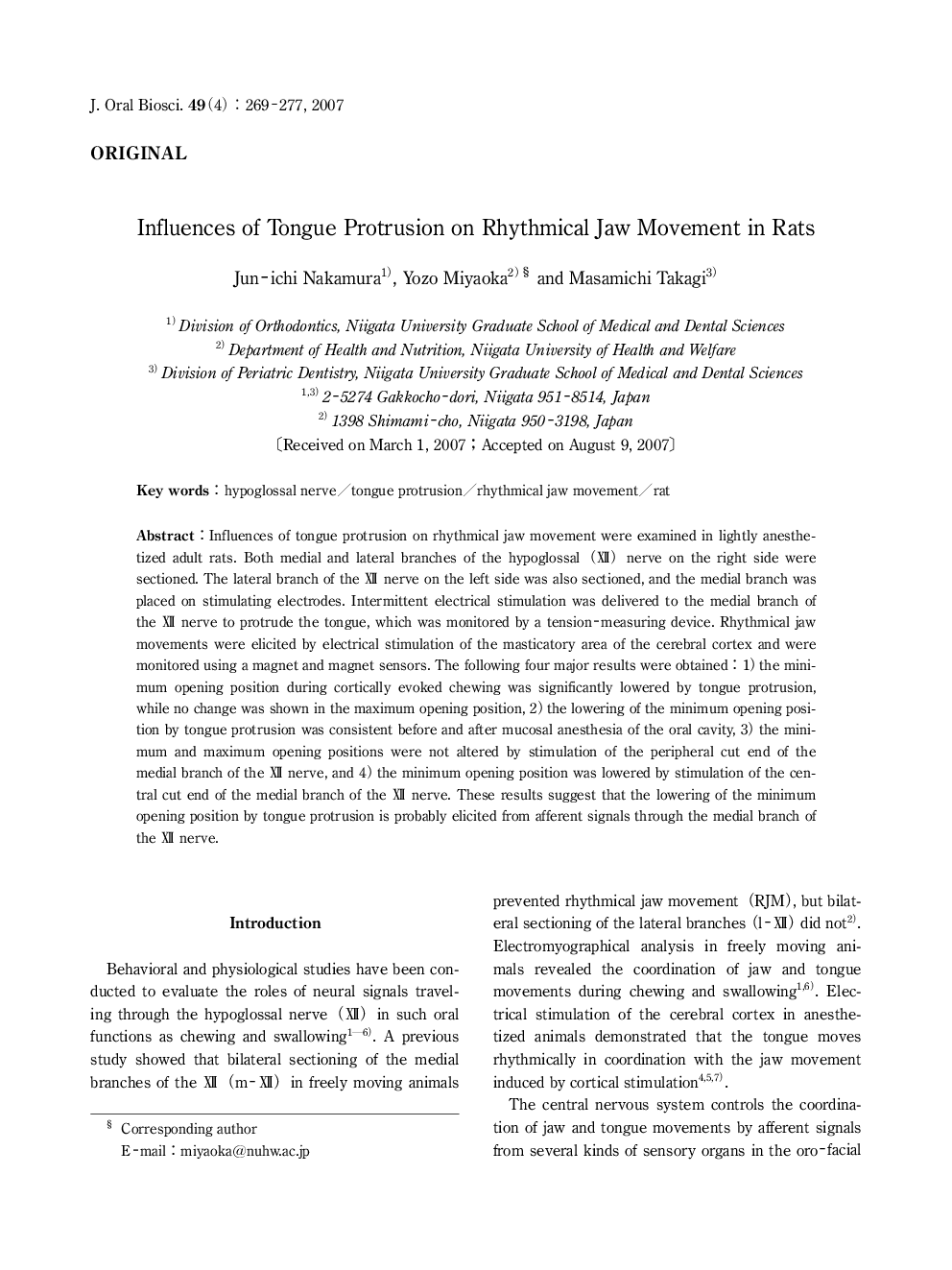| Article ID | Journal | Published Year | Pages | File Type |
|---|---|---|---|---|
| 2777079 | Journal of Oral Biosciences | 2007 | 9 Pages |
Influences of tongue protrusion on rhythmical jaw movement were examined in lightly anesthetized adult rats. Both medial and lateral branches of the hypoglossal (XII) nerve on the right side were sectioned. The lateral branch of the XII nerve on the left side was also sectioned, and the medial branch was placed on stimulating electrodes. Intermittent electrical stimulation was delivered to the medial branch of the XII nerve to protrude the tongue, which was monitored by a tension-measuring device. Rhythmical jaw movements were elicited by electrical stimulation of the masticatory area of the cerebral cortex and were monitored using a magnet and magnet sensors. The following four major results were obtained: 1) the minimum opening position during cortically evoked chewing was significantly lowered by tongue protrusion, while no change was shown in the maximum opening position, 2) the lowering of the minimum opening position by tongue protrusion was consistent before and after mucosal anesthesia of the oral cavity, 3) the minimum and maximum opening positions were not altered by stimulation of the peripheral cut end of the medial branch of the XII nerve, and 4) the minimum opening position was lowered by stimulation of the central cut end of the medial branch of the XII nerve. These results suggest that the lowering of the minimum opening position by tongue protrusion is probably elicited from afferent signals through the medial branch of the XII nerve.
